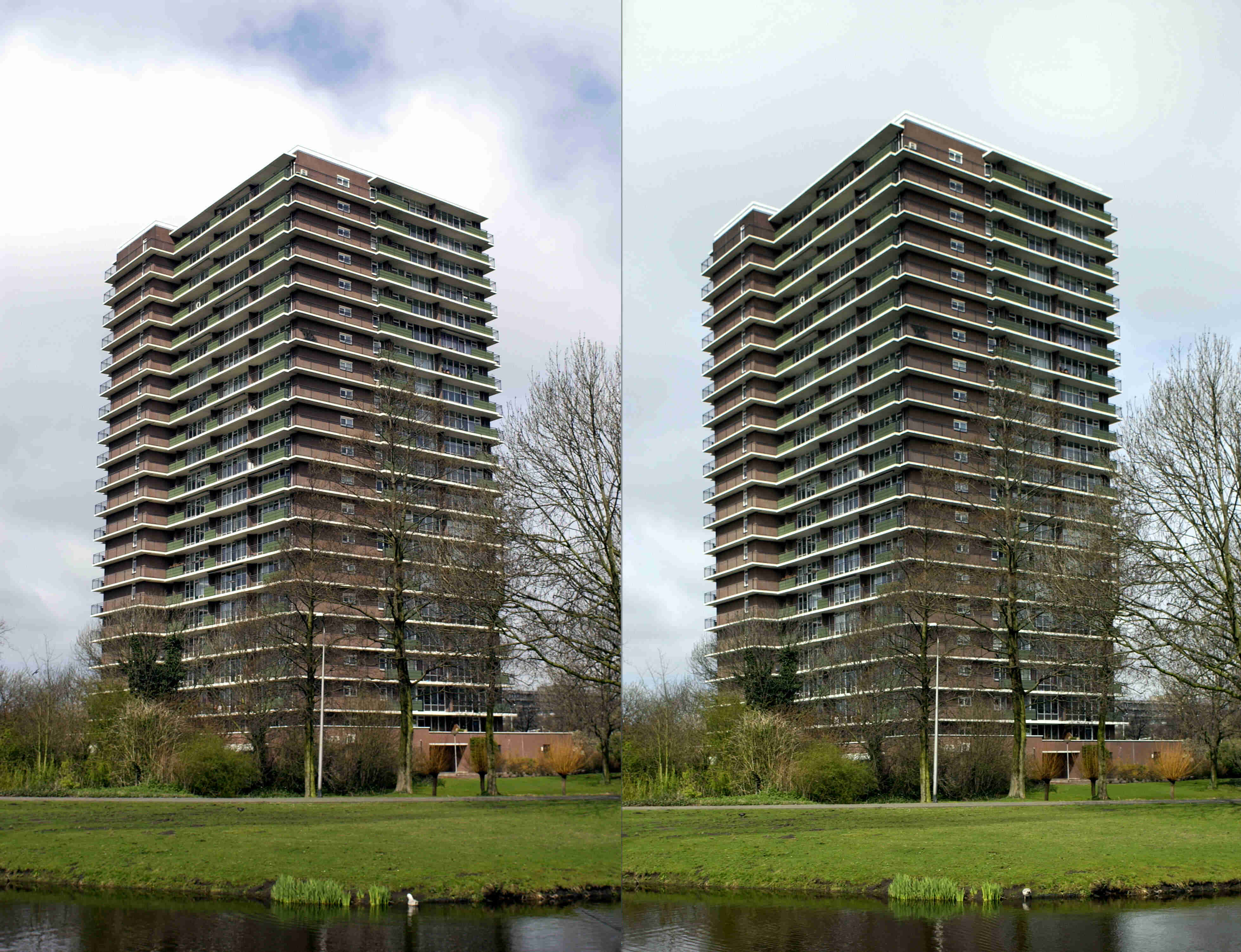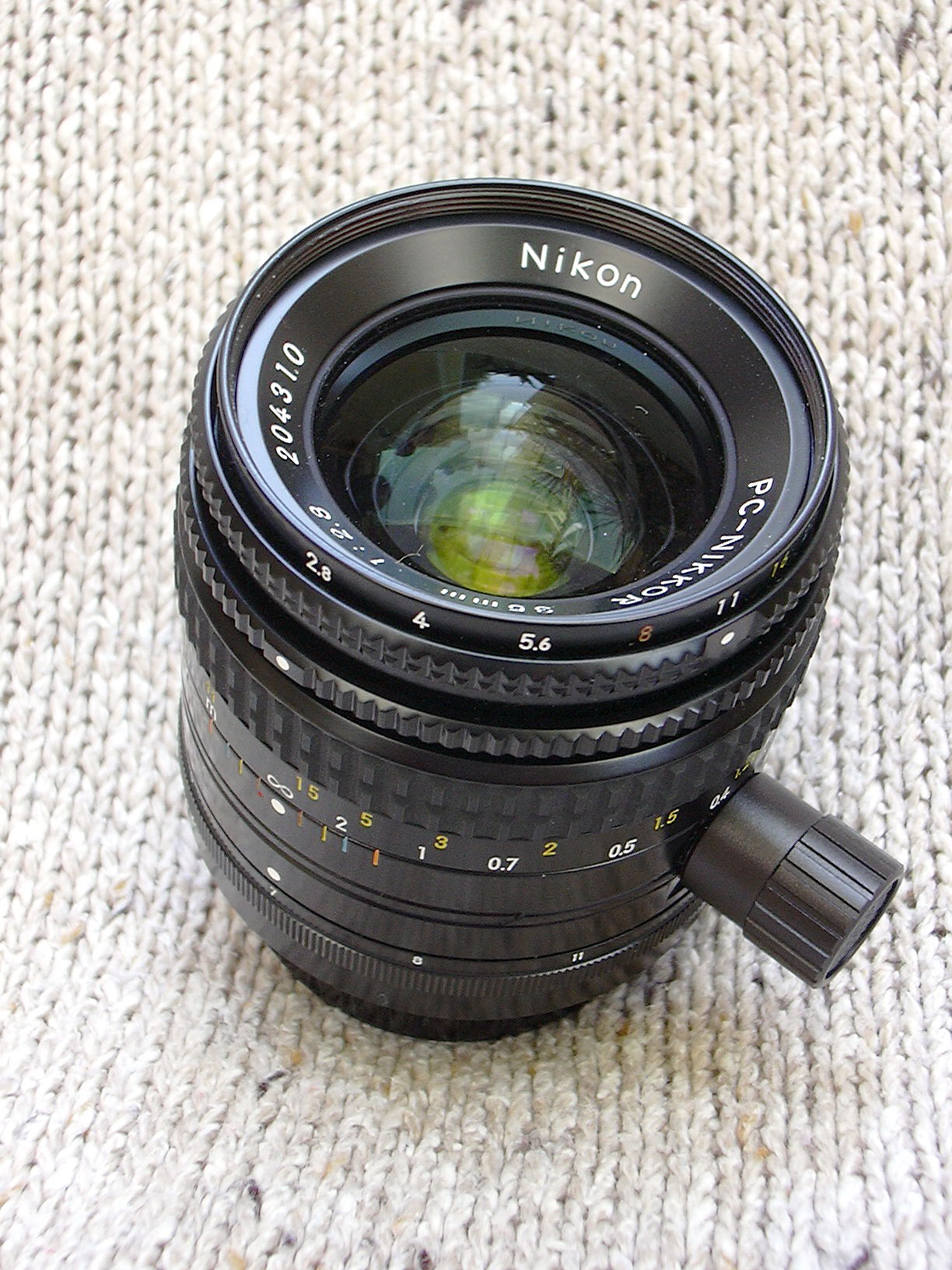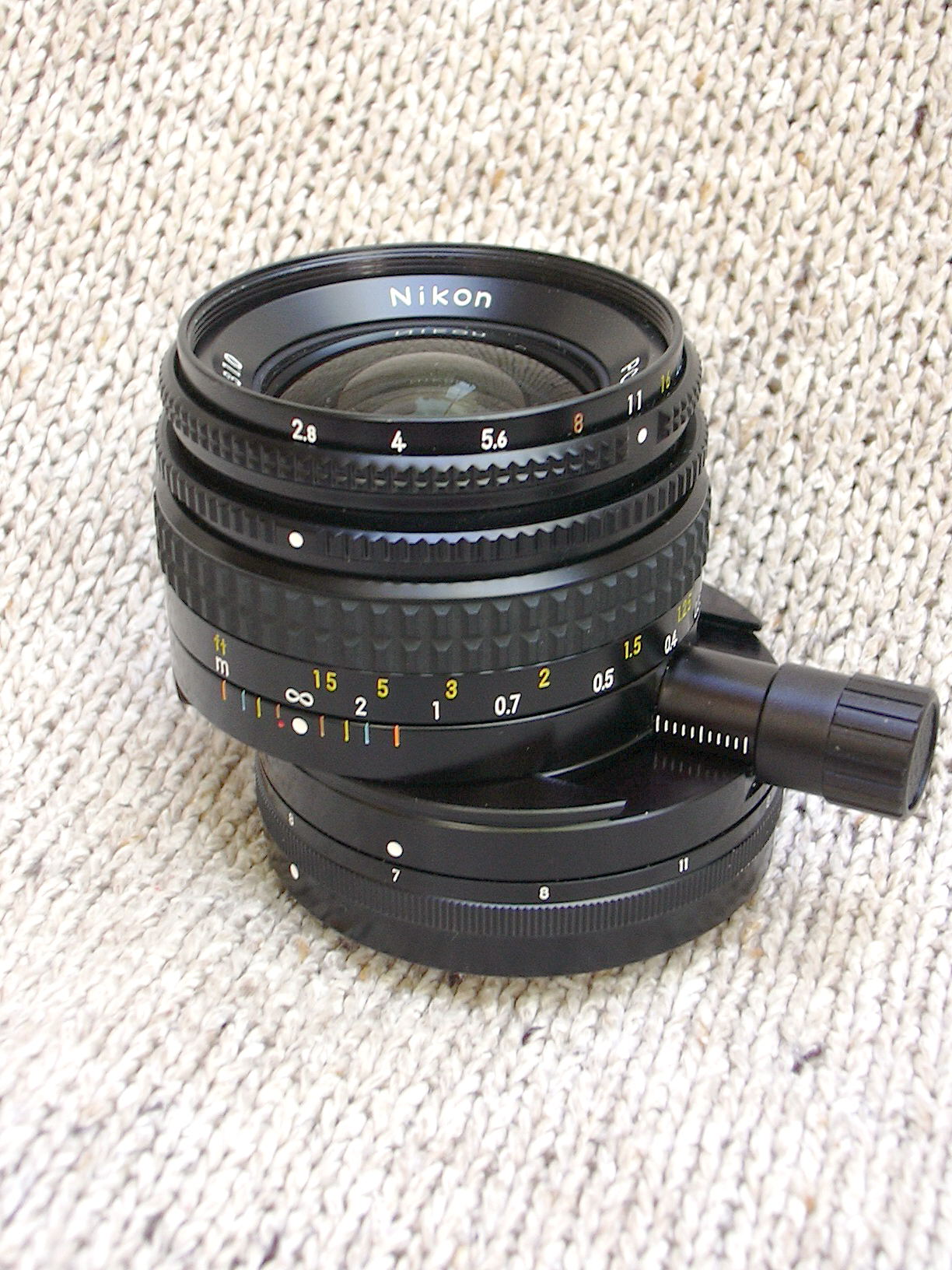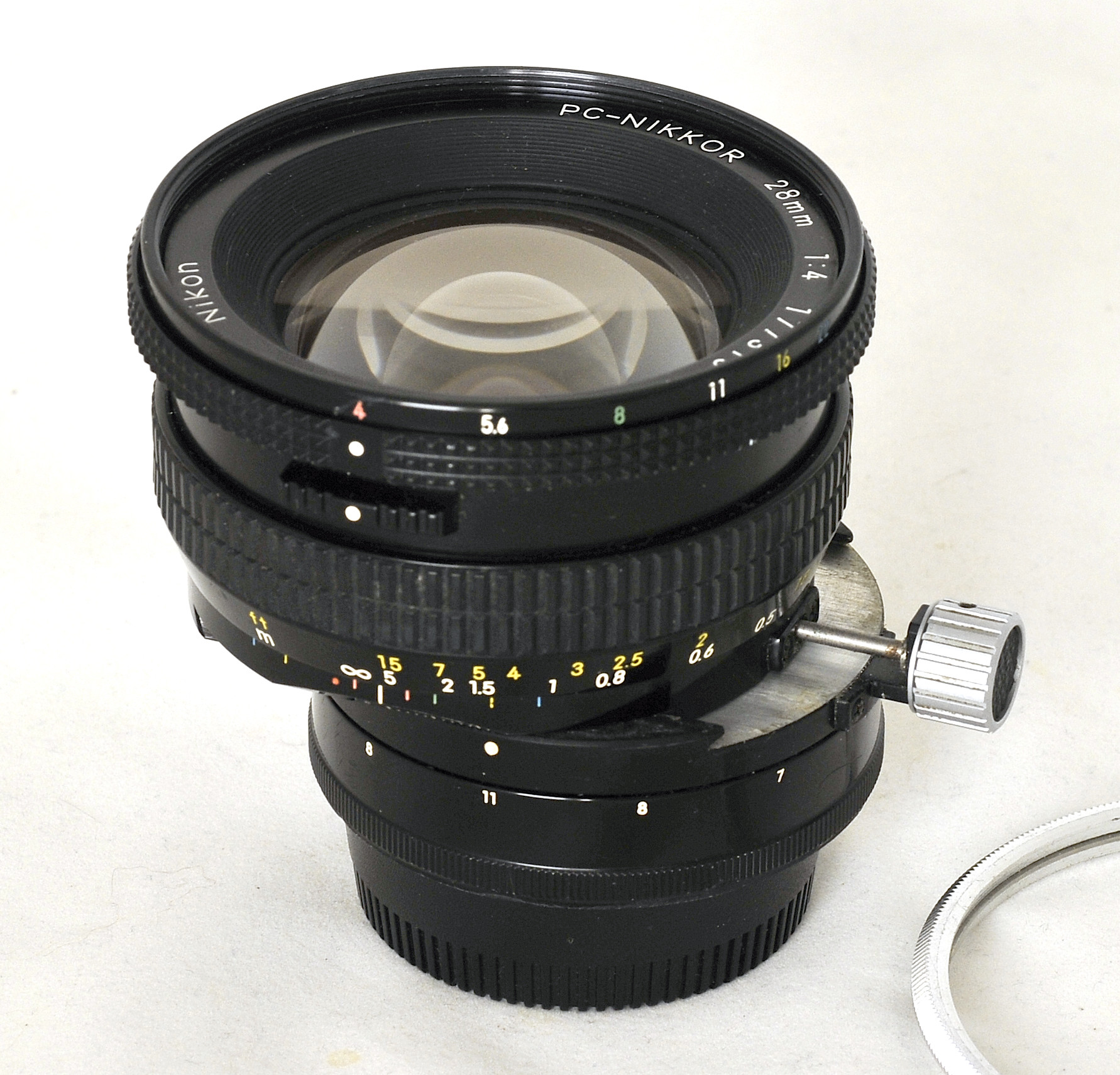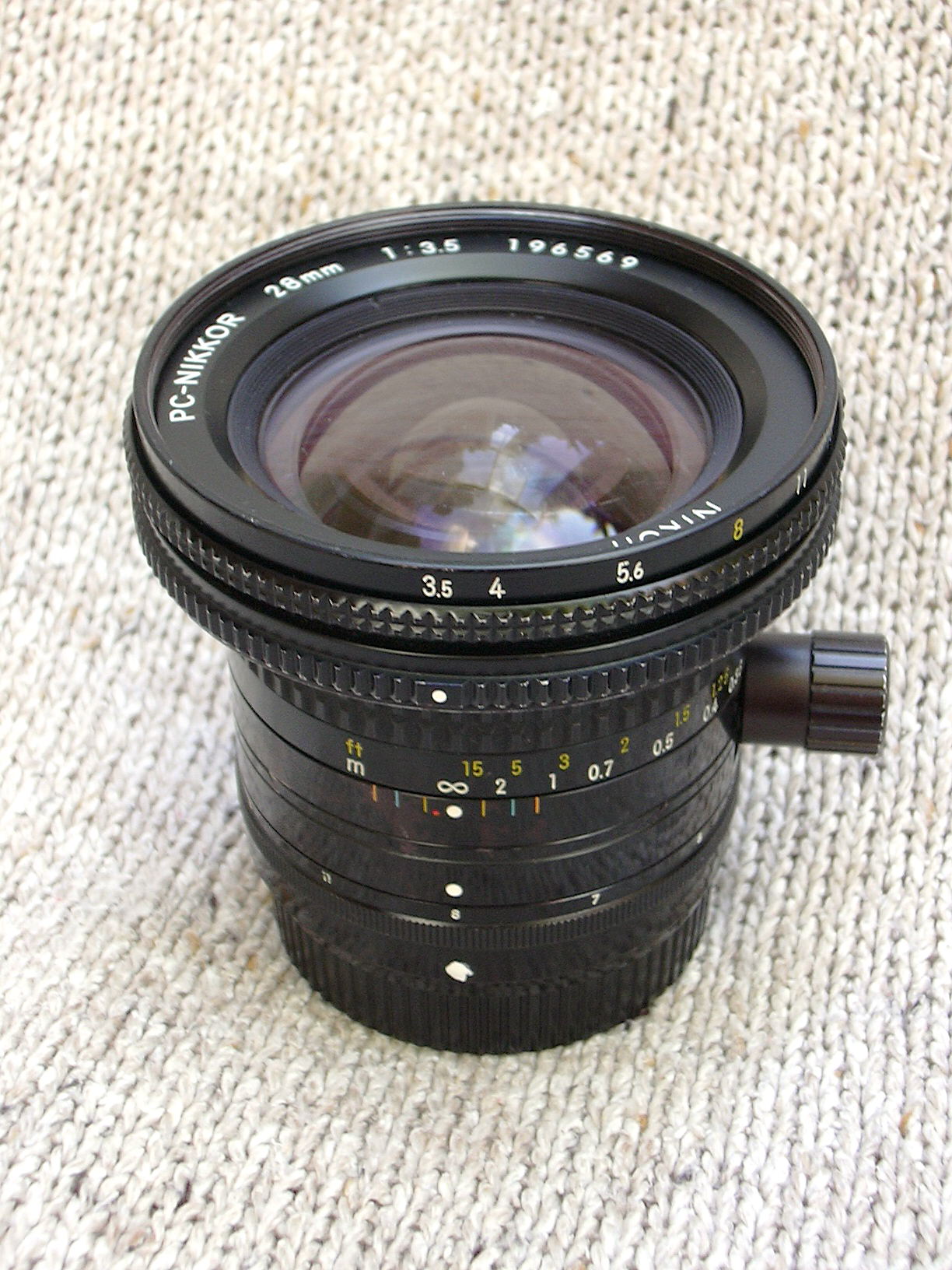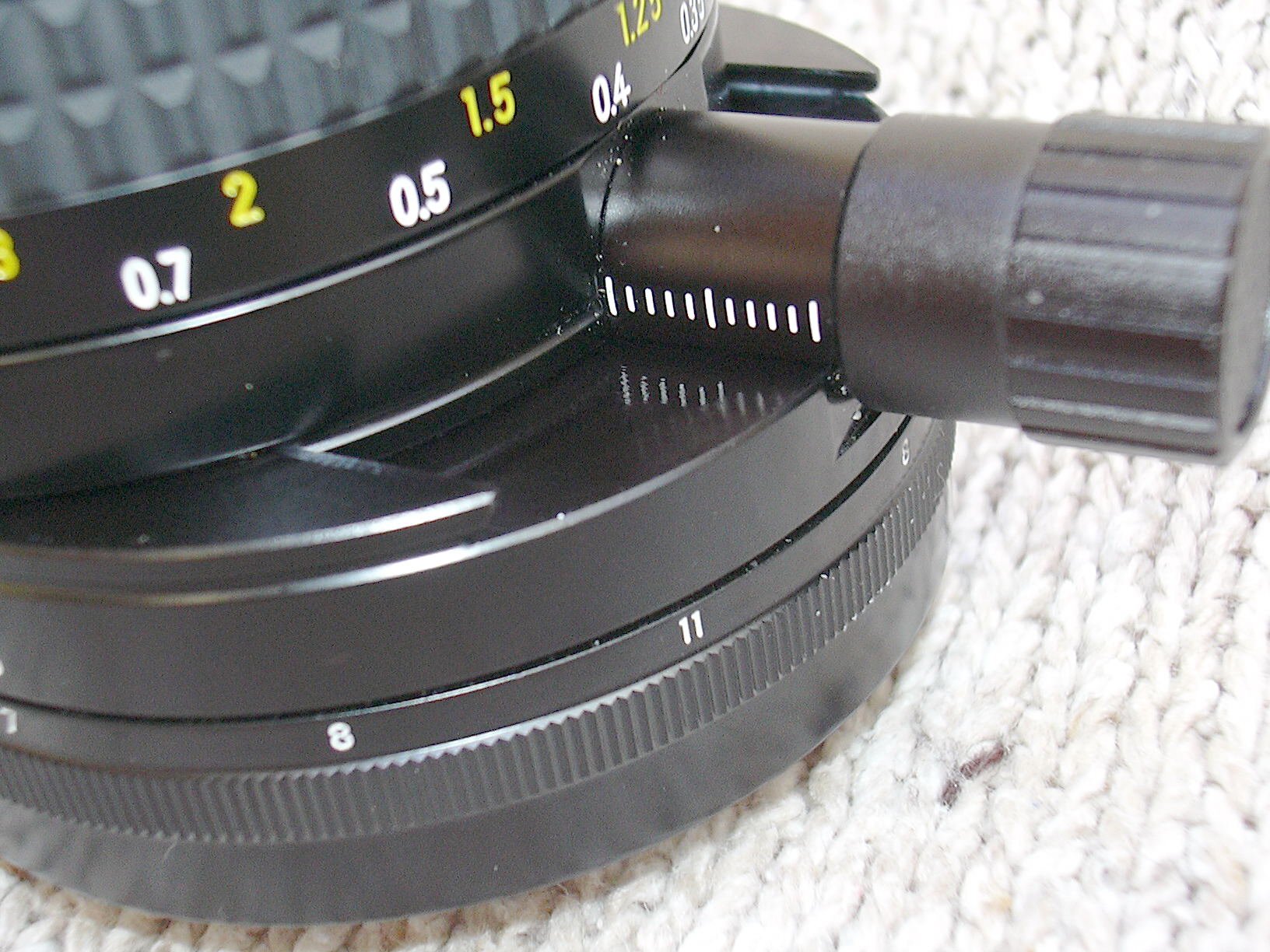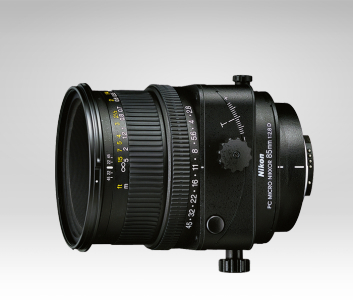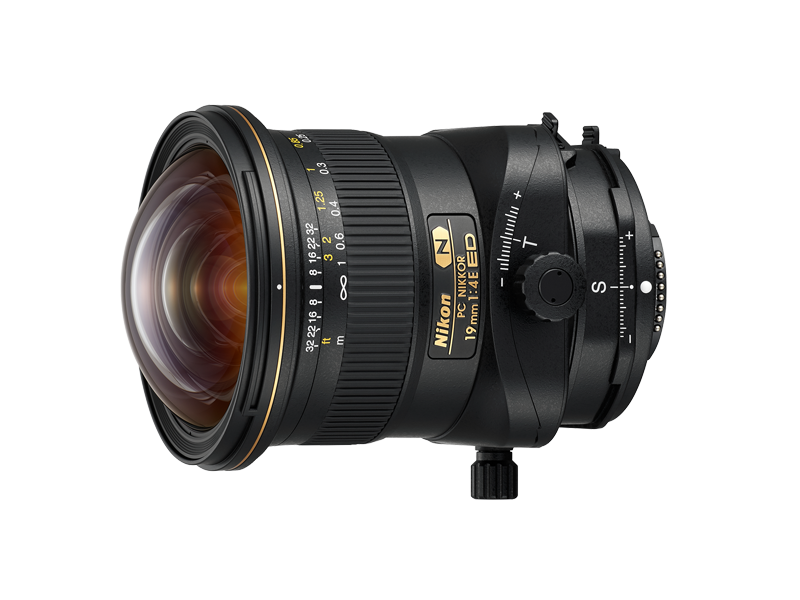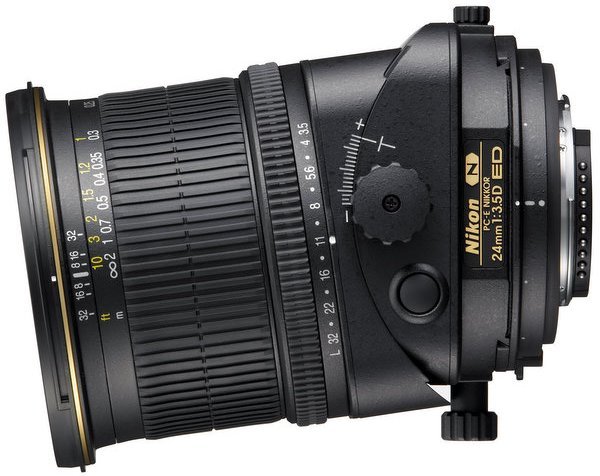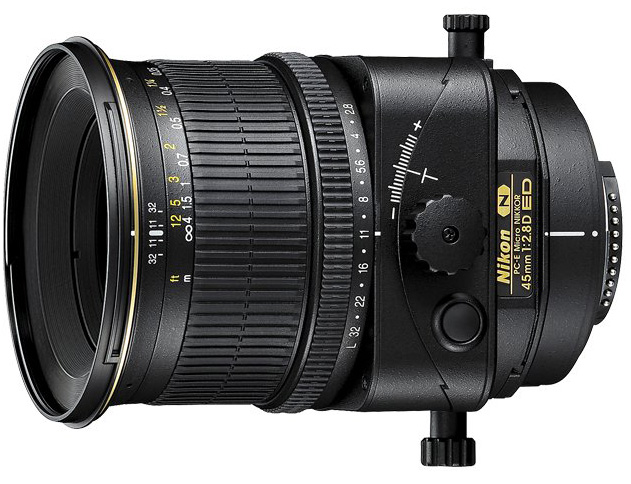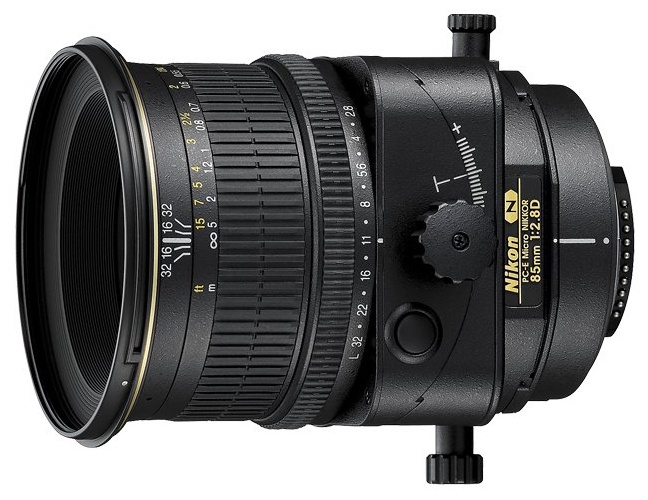Nikon shift lensesThe so called shift lenses are produced and sold by Nikon Corporation as PC-Nikkor. PC doesn´t stand for ´personal computer´ but for ´perspective control´. And what is perspective control? It is the control and adjustment of certain distortions in a image. The best example is a picture of a high building taken from the ground floor upwards (see below). In a picture that building is likely to fall over backwards. With a PC-lens it is possible to ´pull´ that building straight (up). That´s not the only feature of a PC-lens. It is also possible to make panorama pictures. How? Continue reading! Nikon Corporation presented in July 1962 the first PC-lens in the world for a 35mm-film SLR camera: the PC-Nikkor 3.5/35 mm. Since then more were introduced, as you will see from the listing below. The optical axis of a PC-lens - aka tilt & shift lens - can be shifted in relation to the viewing angle. Half way the lens barrel it is possible to shift/move the front part of the lens barrel (in most lenses listed here some 11 mm.) out of the optical axis. As the total lens can be turned 360° the effect of that out-of-the-axle-movement can be used to eliminate distortions and to correct perspectives ´around the clock´. The word ´tilt´ is related to the PC-Micro-Nikkor only as the older PC-Nikkors can´t be tilted. To use a PC-lens for (horizontal) panorama pictures the first picture should be taken with a total horizontal shift to the left, while the second picture should be taken with a total horizontal shift to the right. If the two pictures are stitched together there will be some overlap in the middle. Using a PC-lens (on a film SLR) with a focal length of 28mm. a panorama picture with a viewing angle of 100° is possible. As the viewing angles of a PC-lens are smaller if used on a (DX) digital SLR, the total viewing angle of the panorama picture will decrease as well. If a 35 mm. PC-lens is used for panorama pictures a total viewing angle of approx. 85° can be obtained.
On a digital reflex camera the shift effect of a PC-Nikkor 35 mm. isn´t much but still acceptable Because of the complex construction of the lens most lenses are pre-set lenses: the aperture has to be set manually via a front ring (except PC-Micro-Nikkor). BTW: if using an SLR camera and measuring light with the built-in exposure meter, the metering has to take place when the lens is set in normal position. After setting the aperture manually the shift of the lens can take place. If used on a digital reflex camera vignetting can occur when shifted at its maximum.
´Pulling´ a building upright isn´t always an advantage (PC-Nikkor 3.5/28 mm + Nikon D1X - 1/350 sec. + f/5.6)
PC-Nikkor 3.5/35 mm.
This is the world´s first PC-lens for a single lens reflex 35mm.- film camera, introduced in July 1962. It has all features and possibilities as described above. Aperture ranges from 3.5 - 32. In its optical design you may find 6 individual elements. Closest focusing distance is 30 cm. The lens weighs in at 290 gr.
PC-Nikkor 2.8/35 mm. This lens - just half a f-stop faster - was introduced in May 1968. Optically (8 elements in 7 groups) it is much better than its predecessor. In October 1975 it was redesigned like all Nikkors, receiving the AI-coupling system and straight barrel with rubber grip. At the 1980 Photokina in Germany a fully (optically - 7 individual elements - as well as mechanically) redesigned lens (pictured below) was introduced. Minimum distance is 30 cm. and aperture ranges from 2.8 - 32. All models are weighing at some 320 gram.
PC-Nikkor in normal position (Courtesy Robert Minderman)
PC-Nikkor in full shift position
PC-Nikkor 4/28 mm.
In August 1975 the 35 mm-.lens was given a sister with a focal length of 28 mm. This lens has an optical construction of 10 elements in 8 groups. Mid 1977 the AI-version was introduced and in September 1983 production stopped. Both versions are weighing in at 410 gram.
PC-Nikkor 3.5/28 mm. In October 1980 the slightly faster shift lens was introduced; in AI-outfit only (see pictures below). Aperture ranges from 3.5 - 22. Minimum distance is 30 cm. Optical construction consists of 9 elements in 8 groups. Weight is 380 gram.
PC-Nikkor 3.5/28 mm in normal position
Close up of the shift mechanism
PC-Micro-Nikkor 2.8/85 mm. D
In June 1999 this beautiful lens was introduced. This real tilt & shift lens can be used as a shift lens (like all lenses mentioned before, although up to 12.4 mm.) but has an extra feature: the front part can be inclined up to 8.3°. This lens can be used on all modern cameras (except the Nikon Pronea S) as it has the electronic contacts to connect the lens to the camera computer. Various details of the picture will be shown in the exif-files. This lens, weighing in at 770 gram, has 6 elements in 5 groups. The minimum distance is 39 cm., thus possible to use for macro-photography. Aperture can be set to 45, gaining a maximum DOF. Exposure metering and flash programs may not work properly if the lens is tilted or shifted or if you use the lens with an aperture other than its maximum. Vignetting may be possible as well. The best is to measure when the lens is in its normal position; thereafter shifting and tilting may take place.
PC-E NikkorsIn 2008 Nikon started to launch a series of impressive optical instruments: (all lenses shown below have electronic contacts to make use of all exposure programs)
PC-E Nikkor 4/19 mm.ED
This 'optical wonder' was introduced mid October 2016. It has an optical formula of 17 elements (of which 3 are made of ED glass and 2 have an aspherical surface) in 13 groups with 9 aperture blades. The lens can be rotated 90° and be focused down to 25 cm. On a FX-camera the viewing angle is 97°, on a DX camera the angle is 73°. The 885 gram heavy lens can take no filters.
PC-E Nikkor 3.5/24 mm. D-ED
Again a technically impressive masterpiece of Nikon´s engineers. This lens - introduced in January 2008 - has a shift of about 11.5 mm. and tilt of approx. 8.5°. It can be focused down to 25 cm. and has a aperture range from 3.5 - 22. On a digital reflex it has an equivalent of a 36 mm.-lens in 35 mm.-photography. This amazing lens has 13 elements in 10 groups; 3 elements are made from ED-glass, 2 elements are aspheric and 1 element has the new nano-crystal coating. The ´E´ in its name stands for ´electronic´ and indicates the electronic contact between the lens and the camera. Aperture, distance, etc. will be shown in the exif.
On July 1, 2008 Nikon announced the release of two more PC-E-lenses: 2.8/45 mm. and 2.8/85 mm. A few months later both lenses were marketed worldwide.
The PC-E 2.8/45 mm. has an optical construction of 9 elements (of which one in made of ED-glass) in 8 groups. All elements have the Nikon Super Integrated Coating, while one element has - additionally - the Nano Crystal Coating. Although the lens has to be focused manually (down to 25 cm.) there is an auto-aperture control with all cameras from the Nikon D3-series and the Nikon D300 and Nikon D700 onwards. The lens has 9 diaphragm blades and a shifting range of 11.5 mm. and a tilting range of 8.5 degrees. The revolving capability is approx. 90 degrees. In FX-format the picture/viewing angle is 51°, in DX-format the angle is 34°50'. The filter size is 77mm and the best hood is the HB-43. The lens weighs in at 740 gram.
The PC-E 2.8/85 mm. has 6 elements (also with Super Integrated and Nano Crystal Coating) in 5 groups. The shifting, tilting and revolving features are identical to the 45 mm. lens. The viewing angle here is 28°30' in FX and 18°50' in DX-format. The lens also can have 77mm filters, its best hood is the HB-22 and the lens weighs in at 635 gram.
|
